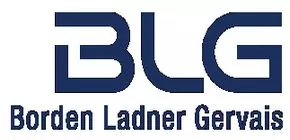- with Senior Company Executives, HR and Finance and Tax Executives
- with readers working within the Accounting & Consultancy, Banking & Credit and Insurance industries
The Basel Committee on Banking Supervision (BCBS) and the International Organization of Securities Commissions (IOSCO) released the final policy framework (the Final Framework) that establishes minimum standards for margin requirements for non-centrally cleared (NCC) derivatives. Prior to the Final Framework, the BCBS and IOSCO had issued the first consultative document in July 2012 (the First Paper) and a second consultative document (the Second Paper), which presented "the near-final policy framework", in February 2013. A copy of BLG's Derivatives Alert on the First Paper and the Second Paper can be found [ here] and [ here].
To date, the Bank of Canada and the Canadian Securities Administrators (CSA) have provided little specifics on collateral requirements for over-the-counter (OTC) derivatives. As the Canadian regulators are generally committed to having a consistent regime with other G20 countries, we expect that the elements identified in the Final Framework will inform much of the framework in Canada.
KEY DEVELOPMENTS IN THE FINAL FRAMEWORK
The eight elements and the "key principles" addressing each of these elements, as set out in the Second Paper, remain the same in the Final Framework. The eight elements are:
- instruments subject to the requirements;
- scope of applicability;
- baseline minimum amounts and methodologies for initial and variation margin;
- eligible collateral for margin;
- treatment of provided margin;
- treatment of transactions with affiliates;
- interaction of national regimes in cross-border transactions; and
- phase-in of requirement.
The key changes from the proposals in the Second Paper include the margin requirements for physically settled foreign exchange forwards and swaps, the permission to re-hypothecate initial collateral (but only under very strict conditions) and a slightly pushed out phase-in schedule for the application of the requirement to exchange variation margin and the requirement to exchange two-way initial margin.
Instruments Subject to the Requirements - Carve Outs for Physically-Settled FX Forwards and Swaps
In the Second Paper, the BCBS and IOSCO proposed that the margin requirements should apply to all NCC derivatives other than physically-settled FX forwards and swaps, and sought comment on the margin requirements for these instruments. The proposal that physically-settled FX forwards and swaps be exempt from the margin requirements received support from many industry participants, including ISDA.
In the Final Framework, physically-settled FX forwards and swaps are not subject to initial margin requirements. However, they are subject to variation margin requirements, either by way of supervisory guidance or national regulation. In developing variation margin standards for these instruments, the BCBS and IOSCO urge national supervisors to consider the recommendations in BCBS's supervisory guidance for managing settlement risk in FX transactions.
With respect to cross-currency swaps, fixed, physically-settled FX transactions associated with the exchange of principal of cross-currency swaps are not subject to initial margin requirements; however, all components of cross-currency swaps are subject to variation margin requirements.
Treatment of Provided Margin - Re-hypothecation Permitted in Limited Circumstances
In the Second Paper, the BCBS and IOSCO proposed that collateral collected as initial margin should not be re-hypothecated, but sought comment on whether re-hypothecation should be allowed to finance or hedge customer positions if the re-hypothecated assets are protected. In response, some industry participants expressed support for permitting re-hypothecation and some (including the Investment Company Institute in the United States) expressed support for restrictions on re-hypothecation.
In the Final Framework, the prohibition on re-hypothecation of collateral deposited as initial margin is removed. A party is allowed to re-hypothecate collateral deposited as initial margin on a "one-time only" basis (i.e., once the collateral has been re-hypothecated to a third party, the third party is not allowed to further re-hypothecate such collateral), but only for the purpose of hedging the party's derivatives position arising out of transactions with a customer for which initial margin was collected and only if certain other conditions are met. These conditions include, among other things, obtaining the consent of the party depositing the collateral, segregation of the collateral and regulation of both the party that is re-hypothecating the collateral and the party to whom collateral is re-hypothecated. The Final Framework also includes an explicit statement that collateral collected as variation margin may be re-hypothecated.
Phase-in of Requirements
In the Second Paper, the BCBS and IOSCO proposed that the requirement to exchange variation margin become effective on January 1, 2015 and that the requirement to exchange two-way initial margin with a threshold of up to â,¬50 million be phased in between 2015 to 2019, based on the month-end average notional amount of NCC derivatives for the last three months of the previous calendar year of the corporate group to which a covered entity belongs, starting with â,¬3 trillion in 2015 to â,¬0.75 trillion in 2018. In 2019 and beyond, any covered entity belonging to a group whose aggregate month-end average notional amount of NCC derivatives for the last three months of the preceding year is more than â,¬8 billion would be subject to the initial margin requirements.
In the Final Framework, the phase-in schedule is pushed out by approximately 11 months. The requirement to exchange variation margin will begin on December 1, 2015 and the requirement to exchange two-way initial margin with a threshold of up to â,¬50 million will be phased in between December 1, 2015 to December 1, 2019, based on the aggregate month-end average notional amount of NCC derivatives for June, July and August of the corporate group to which a covered entity belongs. If the average notional amount for those three months exceeds a certain threshold, the covered entity would be required to post collateral when transacting with another covered entity during the one year period from December 1 of that year to November 30 of the following year.
When the phase-in schedule was proposed in the Second Paper, a number of industry participants, including ISDA, expressed concerns that the phase-in arrangements impose too short a timeframe. Although the timing is extended in the Final Framework (both in terms of when the margin requirements will apply and the time period between the relevant period for determining a corporate group's notional amount and when the covered entity is required to post collateral based on such determination), it is not clear that it has been sufficiently extended to address industry participants' concerns. In addition, some industry participants questioned whether the aggregate month-end average notional amount of NCC derivatives of a certain three-month window within a year is a good indication of the derivatives-related risks posed by a covered entity and whether using that number as a trigger for margin requirements is appropriate. The BCBS and IOSCO did not provide a response to these concerns in the Final Framework.
LOOKING AHEAD
In the Final Framework, the BCBS and IOSCO acknowledge the impact that margin requirements will have on liquidity because of the increased aggregate demand for high-quality collateral. They also acknowledge that the actual impact of margin requirements is subject to various factors and uncertainties, including, among others, the ratio of cleared to NCC cleared derivatives and changes in market volatility over time. The BCBS and IOSCO indicate that they will set up a monitoring group to collect data and to monitor and evaluate the impact of the margin framework.
With respect to the elements in the regulation of OTC derivatives identified and agreed to by the G20, such as trade reporting, electronic trading, central clearing and registration of certain market participants, margin requirements is generally the least developed area for most of the G20 countries to date. The Final Framework provides a common platform for the G20 in designing margin rules for their local market and should facilitate the development of consistent regimes among countries; however, for a country with a small derivatives market, such as Canada, it is likely that the thresholds in the Final Framework will require adjustment in order for the rules to be appropriate in the local market. If the goal is to have margin rules in place by December 1, 2015, the regulators in Canada may not have the benefit of observing how margin requirements are implemented in other countries and the impact of such requirements on local markets before margin rules are implemented in Canada.
A full copy of the Final Framework is [available here].
The content of this article is intended to provide a general guide to the subject matter. Specialist advice should be sought about your specific circumstances.



